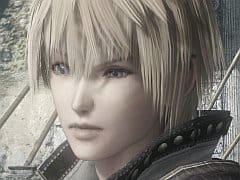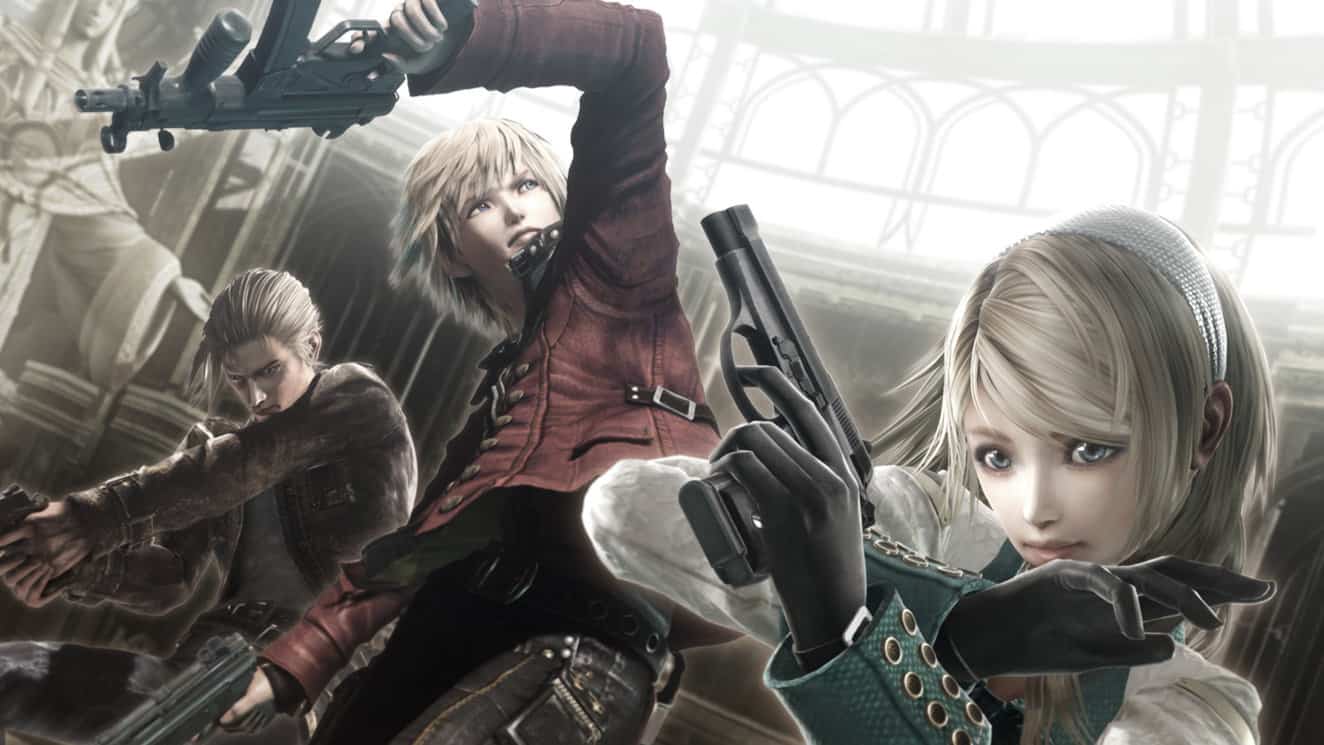You can trust VideoGamer. Our team of gaming experts spend hours testing and reviewing the latest games, to ensure you're reading the most comprehensive guide possible. Rest assured, all imagery and advice is unique and original. Check out how we test and review games here
At this point I’m supposed to adopt an authoritative tone and pretend that I’m a well of knowledge when it comes to Japanese Role Playing Games – but unfortunately, I can’t. The best I can manage is to stand in the corner with a spiky haircut, pout my androgynous metrosexual face, and say something along the lines of “…”. Because sadly, as shameful as it is for me to admit it, I lack experience when it comes to this kind of game. Sure, I played Final Fantasy 7 and loved every second of it – but then again, who didn’t? Aside from a few notable exceptions, I’m still very much green around the edges.
Still, there are advantages to this situation. If you’re a hardcore J-RPG gamer then you’ll probably have a distinctly different appreciation for Resonance of Fate, but there’s equally a good chance that you may not be so familiar with the games of this ilk; after all, the genre has arguably lost a little of its European popularity in recent years – particularly with the advent of Western big hitters like Mass Event and Fallout 3. Under the circumstances, you may well fall into the same ill-informed category as me. If that’s the case, then hopefully it’ll be more significant when I say that Resonance of Fate is a seriously interesting-looking game – one that you’d do well to keep an eye on, even if it’s been a while since you entered a turn-based battle.
As we explained in our preview in August last year, Resonance of Fate is a steampunk story set in Bazel – a sort of multi-layered clocktower of a city that stretches far up into the sky. In classic RPG tradition, the wealthy and powerful inhabitants of Bazel live at the top of the tower, while the less fortunate poorer residents have to make do with the lower levels, where monster attacks are frequent. However, rather than using swords and magic to battle these creatures, flashy guns and acrobatics are the preferred tools for violence. And while our last encounter allowed us to give a rough overview of the game’s setup, my recent hands-on was primarily focused on combat – so that’s what we’re going to talk about today.
While RoF is certainly a turn-based game, the pace of battle is generally fast and fluid. Each character in your party has a time bar that depletes whenever they undertake an action – whether it be fighting, moving or using some form of item. When the bar is empty you switch to another character in your party, at which point you either control them for a bit or skip their turn to recommence the process. Your enemies’ moves and attacks are governed in the same way, but both sides essentially take their turns concurrently. You’re never waiting around for the opposition to take their turn, and indeed it’s quite possible for one side to interrupt the actions of the other. The end result is a combat system that feels like a halfway house between real-time action and the turn-based setups of old.
While you will certainly make use of standard actions like moving or attacking a specific enemy, the bread and butter of combat involves something known as a Hero Run. At the tap of a button you’ll summon a guiding line that allows you to set a straight path for your current character; send them on their way, and you’ll be able to unleash as many attacks as you can before you reach your destination. Whilst moving you’ll also be able to jump in the air – allowing you to hurdle obstacles and to target your foes from above. In addition to looking extremely slick in a Matrix kind of way, these Hero Runs are an efficient way of repositioning yourself while also dealing out damage to the opposition.
Are you with me so far? Good, because there’s a lot more to come. For starters, initiating a Hero Run uses up one bezel (or block) on the Hero Gauge at the bottom of the screen, a sort of visual indication of the current state of your party: when people take enough damage, you’ll lose a bezel and the relevant character’s life will refill. As a result, you’ve got to be slightly mindful when launching these runs – although if you kill an enemy in the course of doing one, you’ll earn the block back. In any case, these runs are all but essential as they open the door to the advanced level of attacks. You might for example, launch an enemy into the air; at this point you can jump up in pursuit, get higher than them and hit them from above – blasting them down into the ground. This is known as a Smackdown move, and is highly satisfying to pull off once you’ve worked out the technique.
It doesn’t end there either. If you perform a Hero Run and make your character move through the middle of the other two party members, you’ll gain a Resonance point. This lets you pull off a special three-way attack wherein your entire party runs around in a big triangle pattern with their weapons blazing: Character A runs to the spot formerly occupied by Character B, who is already on their way to the point where C used to be standing, and so forth. You can actually store up multiple resonance points to prolong the length of the attack, but to get the most out of a Resonance attack, you’ll need to have your party carefully arranged around the enemy; given the through-the-middle requirement of the Hero Runs, it takes quite a lot of careful planning to pull off these moves efficiently.
Let’s take a break there, because I’ve just hit you over the head with four paragraphs worth of technical description – and by now your head is probably spinning. As it happens there are other features I’ve not even mentioned – the ability to charge attacks, for one, and the fact that there are two different kinds of damage that can be dealt to the enemy. I could go on about the nuances of the combat system, but hopefully you get the idea by now: Resonance of Fate has plenty of tactical options when it comes to a good old scrap. The first time you watch a battle, things will seem hideously complicated, but it’s actually fairly simple to get the hang of proceedings. The various special moves and actions have a neat way of working with each other, rather than existing as isolated options – and besides, there’s an informative but concise set of tutorials that walk you through the basics.
The bottom line is that the combat is a pleasing mix of slick, show-off moves and strategic flexibility. Like the rest of the game, it feels like an unusual mix of Japanese and Western values: fights are pretty much turn-based, but they still have the faintest touch of third-person shooter about them. There are still random battles while you’re wandering the map, but when you enter a dungeon the game reverts to a single, constant fight – you can see all your enemies here, and can skirt right around them if you wish.
It was slightly harder for me to get a sense of the story from my brief hands-on, but then it always is with games of this size and scope. What I will say is that I was quite taken with the general design and look of the world. Lead character Zephyr is a typically feminine-looking Japanese hero: he’s all smooth cheeks and long hair, though thankfully he seems to come from the “tough-but-cocky” school of character design, rather than the “tough-but-sulky” gang. Still, he seems to have a certain charisma about him, and his taste in leather jackets is fairly badass (you can change characters’ costumes by buying clothes in local stores). On a wider level, I find the towering spires and plates of Bazel itself to be fairly intriguing. Large gears and other bits of clockwork machinery are built into parts of the town, and while we’ve seen this kind of thing done before in steampunk RPGs, there’s something quite fresh about how clean everything looks. There doesn’t seem to be the usual grime and obsession with shadows that accompanies so many steampunk RPGs – although obviously, I’ve seen only a tiny fraction of the environments on offer.
At any rate, something about Bazel has caught my eye – and having spent a morning arcing through the air, slinging out bullets in a ballistic ballet, I know that the combat system has real potential. Lets hope the rest of the game has the chutzpah to match.
Resonance of Fate is due for release on Xbox 360 and PS3 in the spring.

/https://oimg.videogamer.com/images/1e89/resonance_of_fate_8.jpg)
/https://oimg.videogamer.com/images/f107/resonance_of_fate_9.jpg)






